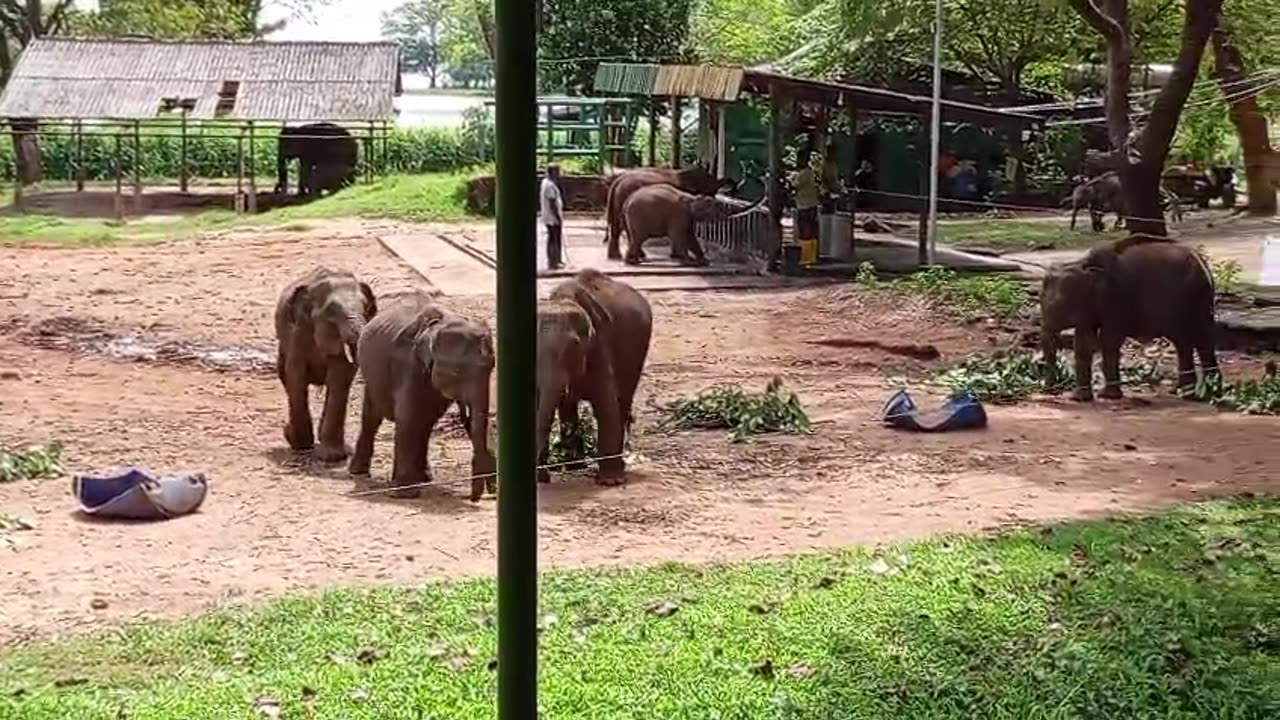Premium Only Content

Feeding Time - Part One
Nestled on the western boundary of the sprawling 33,000-hectare Udawalawe National Park, the Udawalawe Elephant Transit Home (ETH), also known as the Udawalawe Elephant Orphanage, stands as a sanctuary of hope and healing for orphaned elephant calves. Overlooking the tranquil waters of the Udawalawe Reservoir, this remarkable facility plays a pivotal role in wildlife conservation in Sri Lanka.
A Mission Rooted in Compassion
The primary mission of the Elephant Transit Home is both noble and urgent—to rehabilitate young, isolated elephants and prepare them for an eventual return to the wild. These calves, often rescued after losing their mothers to poaching, human-elephant conflict, or natural causes, are nurtured under expert care until they gain the strength, skills, and independence needed to thrive in their natural habitat.
Unlike traditional elephant sanctuaries, ETH does not keep elephants in captivity beyond their recovery period. The approach is strictly non-intrusive, with minimal human interaction, fostering an environment that closely mimics the wild and enhances the calves’ chances of successful reintegration.
A Unique Setting for Recovery
ETH is strategically located beside the Udawalawe Reservoir, a body of water that experiences seasonal changes, creating a rich, diverse ecosystem. This variability in landscape supports a natural setting for both the rehabilitating calves and the wild elephant herds that frequently visit the area.
Interestingly, ETH operates without physical barriers confining the animals. The baby elephants are free to roam and interact with their environment, allowing for natural behavioral development. Wild elephants often wander close to the facility, offering opportunities for social interaction and integration—a rare and invaluable aspect of ETH’s rehabilitation model.
Watching Conservation in Action
Visitors to the ETH are granted a rare glimpse into Sri Lanka’s wildlife conservation efforts. Public viewing is allowed only during feeding times, and even then, from a safe distance to minimize stress on the animals. This controlled viewing balances public awareness with the ethical treatment of wildlife, ensuring that tourism supports the project without disrupting its core mission.
A Success Story in Conservation
Since its establishment in 1995 by the Department of Wildlife Conservation, the Elephant Transit Home has released over 100 elephants back into the wild. Each success story is a testament to the dedication of the caregivers and the resilience of these magnificent animals.
ETH serves not only as a beacon of hope for displaced elephants but also as an educational platform, reminding us of the importance of coexistence and responsible environmental stewardship.
-
 54:40
54:40
BonginoReport
1 day agoLABOR DAY SPECIAL! The Best of Nightly Scroll - Nightly Scroll w/ Hayley Caronia (Ep.124)
26.3K4 -
 1:06:10
1:06:10
Russell Brand
7 hours agoThe Greatest Lie Ever Told? - SF625
42.8K65 -
 LIVE
LIVE
GrimmHollywood
4 hours ago🔴LIVE • GRIMM HOLLYWOOD • SKATE EARLY ACCESS • BRRRAP PACK • READY OR NOT •
35 watching -
 LIVE
LIVE
SavageJayGatsby
2 hours agoLet's Play: Pacific Drive || $300 Weekly Goal - Spicy Bite Saturday || Teen Drinkin is Very Bad
45 watching -
 LIVE
LIVE
blackfox87
1 hour agoWe Back Baby!! | PREMIUM CREATOR | #DisabledVeteran
38 watching -
 LIVE
LIVE
MadHouse_
38 minutes agoFinsihing up the Main story and then some DLC.
44 watching -
 1:41:06
1:41:06
vivafrei
5 hours agoTrump Changing Tune on Operation Warp Speed? CBC Promoting Propaganda? Shiloh Hendrix Update & MORE!
171K78 -
 LIVE
LIVE
The Mike Schwartz Show
3 hours agoTHE MIKE SCHWARTZ SHOW Evening Edition 09-01-2025
106 watching -
 46:25
46:25
The Quartering
7 hours agoMeta PC Winner, Trump Ruins Libs Dark Fantasy & Raja Jackson Case Heats Up!
127K57 -
 DVR
DVR
StoneMountain64
5 hours agoNew Missions for Battlefield 6 Unlocks (+New Mouse and Keyboard)
31.4K1